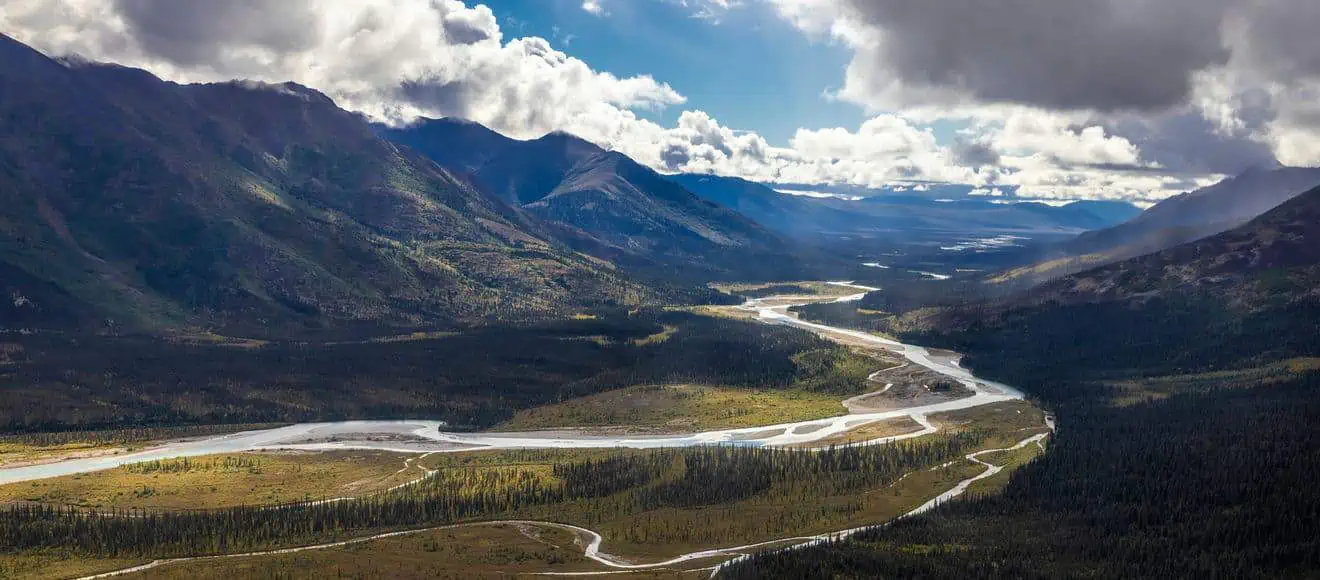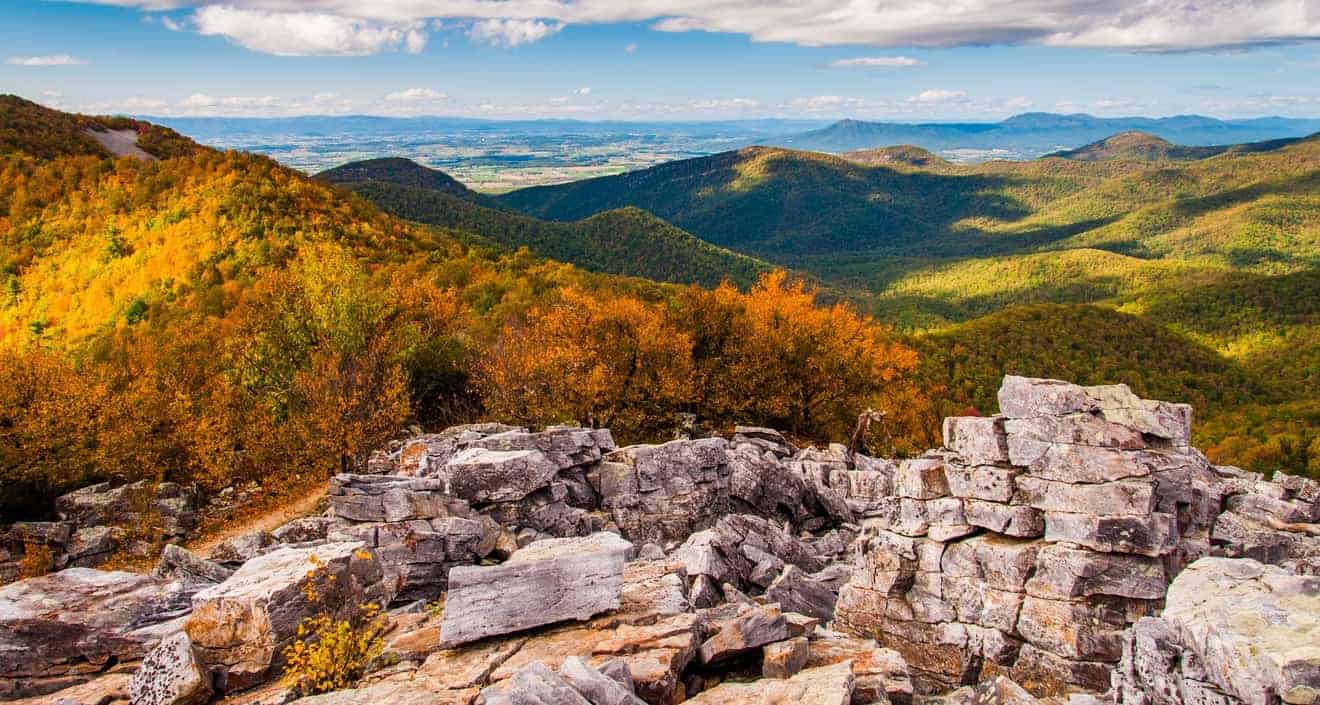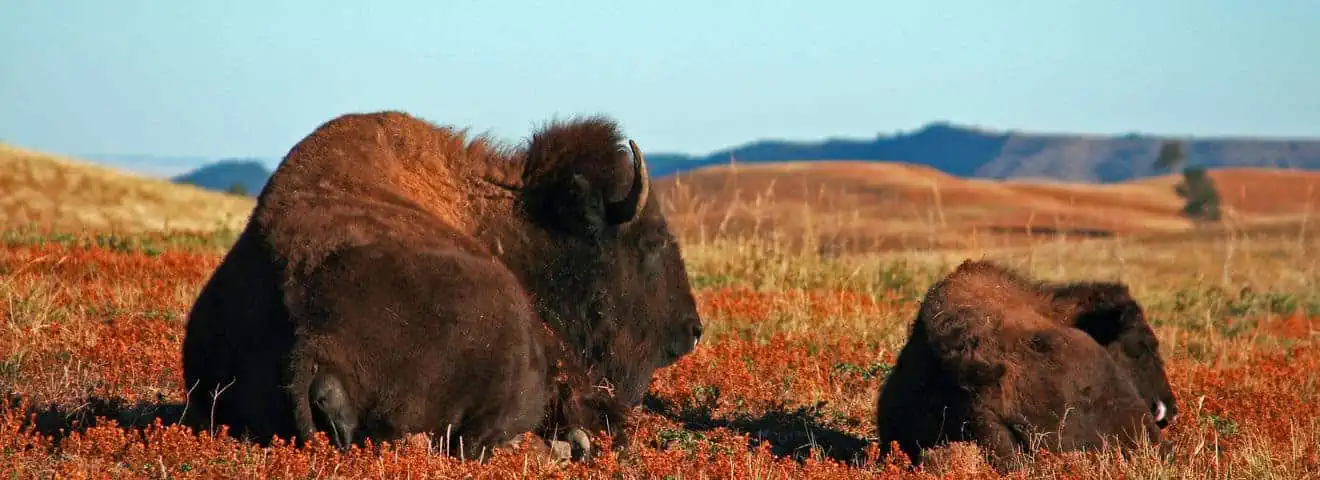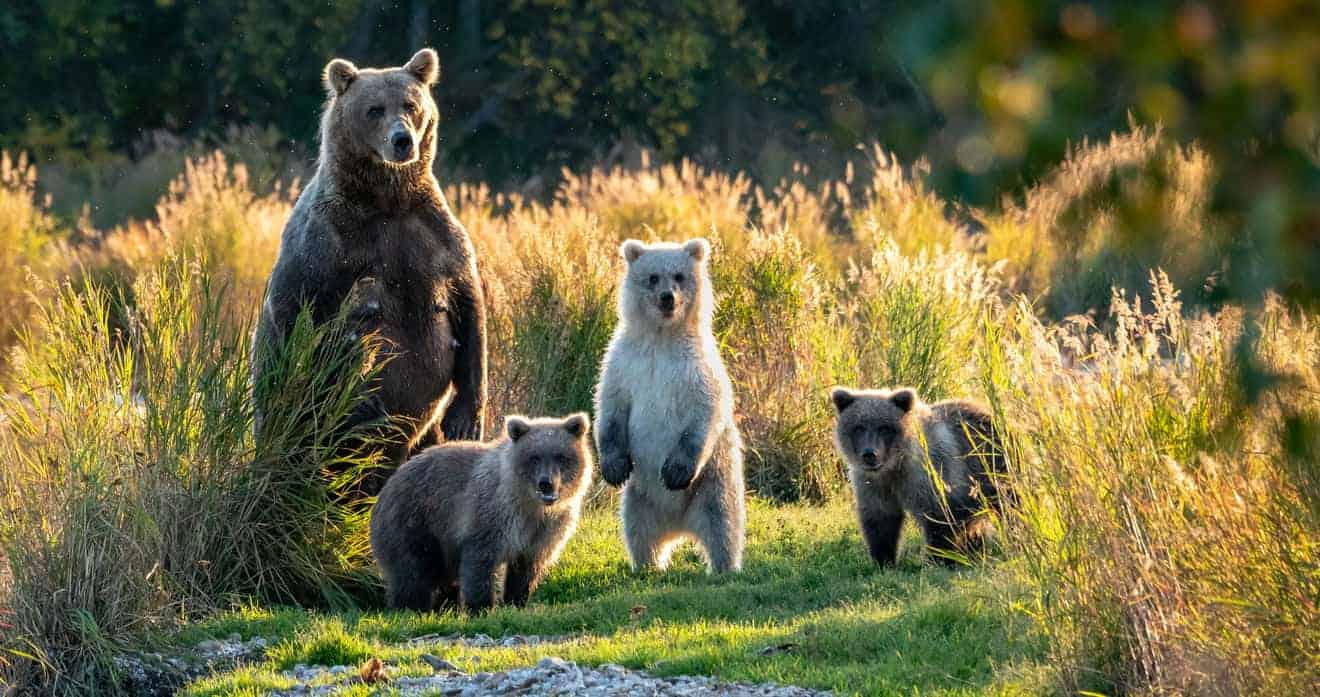Gates of the Arctic National Park Preserve is one of America’s most rugged, largest and least accessible parks. It is the ideal place for those who feel like true explorers and want to immerse themselves in pristine nature, and definitely far from tourist resorts. After all, we are talking about a park located in the farthest reaches of Alaska in the northern part of the state, beyond the Arctic Circle.
Contents
A Brief Introduction to Gates of the Arctic National Park
Gates of the Arctic National Park is the second largest national park in the United States, after Wrangell St. Elias National Park, and its area exceeds that of Belgium and Luxembourg combined. It is also the northernmost park in the U.S. covering part of America’s northernmost mountain range, the Brooks Range, and the only one located north of the Arctic Circle.
It owes its name to Bob Marshall, a forester and writer who explored this area in 1929 and published Arctic Village, a travel account describing this area, in 1933. When he reached the point where the Koyukuk River passes between two mountains, Boreal Mountain and Frigid Crags, Marshall described the place as the Gates of the Arctic.
Its remote location, lack of roads and services, harsh climate, and many other factors also make it America’s least visited national park, but adventurers who spend time there will certainly not be disappointed. There are few places like this in which you can immerse yourself in nature and get as far away from civilization as possible.
Although these areas are impervious and may appear devoid of human life, this is not exactly the case. As far back as twelve thousand years ago, this territory was traversed by nomadic peoples who moved through the Arctic lands and lived mainly on hunting caribou. Europeans, on the other hand, did not explore this interior area of Alaska until the late 1800s, searching for gold and other minerals. Today the main village within the park’s boundaries is Anaktuvuk Pass (in the Inupiaq language it means “Land of caribou droppings”), where mainly Nunamiut people live.
Taiga, or boreal forest, forms the main biome in the southern part of the park. Spruce, fir and aspen are the main types of trees found here. In the northern area, on the other hand, we find the Arctic desert, a cold, arid and inhospitable territory where winter temperatures drop as low as -58°.
The park’s fauna is very diverse, and the most common animal is undoubtedly the caribou. There are more than half a million of them. Other large mammals in the park include bears, moose, musk oxen, wolves, Dall sheep, wolverines, lynx, foxes, and many types of rodents, as well as several species of birds, especially birds of prey.
Location and Directions
The park is located in north-central Alaska. The nearest road is the rugged Dalton Highway, which runs along the park’s eastern border. There are no roads inside the park, so the only way to get around is on foot or with small airplanes.
To reach the park, first you must go to Fairbanks, the primary city in central Alaska. In the article I wrote about Fairbanks, I explained how to get there by air or by car. From Fairbanks you will take a plane and land in one of the small towns closest to the national park. The main ones are Coldfoot and Wiseman to the east, Bettles to the south, and Anaktuvuk Pass to the north.
All of these locations can be reached by air, via one of the air taxi companies that operate in the area (more information here). Or, if you already know your destination within the park, simply arrange to take an air taxi to that location.
Alternatively, you can also drive on the Dalton Highway from Fairbanks to either Coldfoot or Wiseman. If that is what you plan to do, you can either rent a car or take a bus. The Dalton Highway Express offers bus services, but it does not run every day.
So, then what happens? Next, you will head to the park. The only problem is that there are not only no roads, but also no marked trails. All that remains to say is, go have an adventure!
Best Time to Visit Gates of Arctic NP
Summer is the only favorable season to visit this park, for two reasons. The first is that there are very few hours of daylight in the winter (and practically none near the solstice), and the second is that the temperatures in winter are so cold that all activities come to a halt. Also bear in mind that every month is different and most importantly that the change of seasons at this latitude is not the same as in other parts of the world.
The first option for you to consider is to go in June. Temperatures are good and thanks to the summer solstice there are almost 24 hours of daylight around this time of year. There are many advantages that make June the ideal month to travel to the Gates of the Arctic.
July, on the other hand, has pros and cons. On the one hand, there are always plenty of hours of daylight, but it is also the rainiest month of the year. So, if you come in July, bring a raincoat. When it is not raining, there is constant sun exposure and humidity. The muggy weather conditions also means that there will be a lot of mosquitoes, so it is essential to pack insect repellent.
In August the days begin to get shorter, and by mid-August the duration of day and night becomes more like what most people are used to. Temperatures are generally pleasant and especially at the end of the month mosquitoes decrease dramatically. Also, at night we begin to see the Northern Lights. August is definitely a great month to come.
September is the last month of the year to consider visiting the park. Conditions are similar to August, and the colors of the leaves begin to change as fall sets in. In September, but even as early as August, there are usually several hunters.
Things to Know Before You Go
By now it is pretty clear that the park is in the middle of nowhere. While this means that you will experience the breathtaking beauty of pristine nature, at the same time it also means zero services. Therefore, you will have to fend for yourself, so it is essential to arrive well prepared. Here are a few things to keep in mind.
Schedules, Tickets and Visitor Center
The park has no entrance hours and no tickets, partly because there is not even a road, there may not even be a gate to pass through or a ranger’s lodge to check tickets. There are, however, a few small visitor centers and their schedules are as follows:
- Fairbanks Alaska Public Lands Information Center. Here you can learn lots of information. Since nearly all who travel to the park pass through Fairbanks, visitors typically stop at this visitor center. It is open year-round from Monday to Saturday, from 8 am to 5 pm.
- Arctic Interagency Visitor Center. This small visitor center in Coldfoot is open only in the summer every day from 12:00 p.m. to 8:00 p.m.
- Bettles Ranger Station and Visitor Center. This ranger station also has a small visitor center and is open only in the summer.
- Anaktuvuk Pass Ranger Station. The Anaktuvuk Pass Ranger Station is open from April to September, Monday to Friday from 9:00 a.m. to 5:30 p.m.
Food, Maps and Internet Connection
As an Amazon Affiliate we will receive a commission from eligible purchases made through the links in this section of the article.
The first question people ask is: what will I eat while in the park? If there are no roads or housing, there certainly will be no supermarket or restaurant. That is why you need to pack all the food you need, such as dehydrated meals, and a camping stove. Also, to be able to have clean drinking water, I always recommend carrying a portable water purifier, which you can purchase online at an affordable price.
The second question everyone asks: will I have service on my phone when I am in the park? The answer is no. This is why having a map and perhaps a GPS device are essential tools so that you do not get lost.
Clothing and Equipment
As an Amazon Affiliate we will receive a commission from eligible purchases made through the links in this section of the article
In your backpack there are things that you absolutely must bring. First of all, clothes that are suitable for hiking, but also a comfortable change of clothes for when you set up camp in the evening. Of course, you will also need to bring all the necessities for overnight stay, starting with a tent and a sleeping bag.
As I mentioned above, there are many hours of daylight in the summer and it can easily get to you. A hat and a pair of sunglasses are practically mandatory here. Don’t forget to bring waterproof boots, gaiters, or rubber boots. This is because you will need to ford streams, and it is important to be able to keep your feet dry. Another essential item is a waterproof jacket.
Finally, remember that you are in bear country. Bear spray, which you may need in an emergency, can be bought anywhere in Alaska. Bring an airtight container for food as well, so as to not attract bears.
Hiking in Gates of the Arctic National Park
Scroll down to see all the images
Given the enormous size of this park and the absence of roads within it, including trails, it is difficult to define where you can go hiking. In fact, each hiker can improvise according to his or her own interest and possibilities. However, here are some ideas:
If you start from Anaktuvuk Pass, you can explore the John River and North Fork Koyukuk River area. Many travel to the Anaktuvuk Pass from Dalton Highway. Also found along the North Fork Koyukuk River are the actual “Gates of the Arctic,” the mountains that border the river on either side and the namesake of the entire park. One of the most easily accessible areas from the Dalton Highway is Kuyuktuvuk Creek, and if you keep going down the creek, you will arrive at Oolah Pass.
The Arrigetch Peaks are also stunning. These towering granite mountains perfectly reflect their own name in Inupiat, which means “fingers of the outstretched hand.” To reach them one has to arrive by seaplane to Circle Lake and from there follow first the Alatna National Wild & Scenic River and then Arrigetch Creek.
There are also tour operators who organize guided excursions. The main ones are listed here, along with air taxi companies.
Kayaking and Pack Rafting
As an alternative to hiking, you can also travel by water on one of the park’s main rivers. In addition to the classic canoe and kayak, a popular option is the pack raft, a small inflatable raft that is easily transportable that allows you to paddle on the park’s rivers covering even long distances.
On this website you can see both a map of the rivers and a description of the individual waterways and tips for traveling on them so you can figure out which ones to choose.
Where to Stay Near the Park
Inside the park, we have already seen, the only option is to bring a tent and camp. Before you get to the park, however, you need to find accommodations in Fairbanks. If you are planning such a trip, you will probably be looking for spartan solutions, such as a hostel, then Billie’s Backpackers Hostel is the perfect solution. It offers both dormitory and double and single rooms, with a garden and communal lounge. Another solution that is often more affordable than hotels is to rent an apartment or a house, which are both plentiful in Fairbanks.












